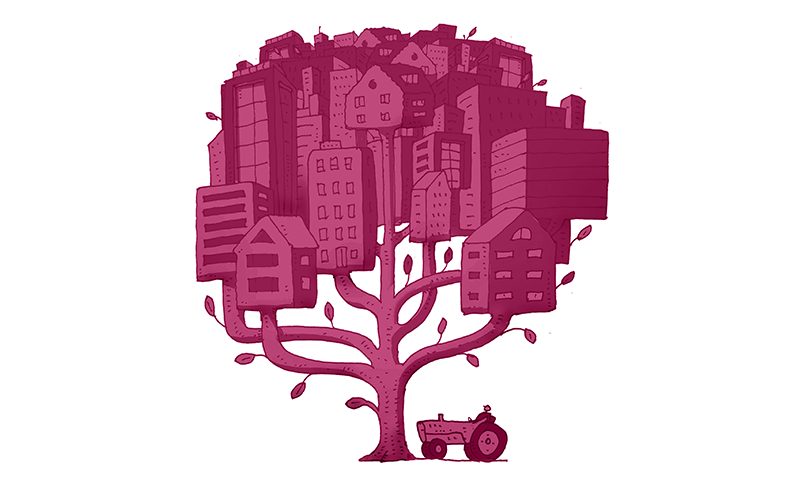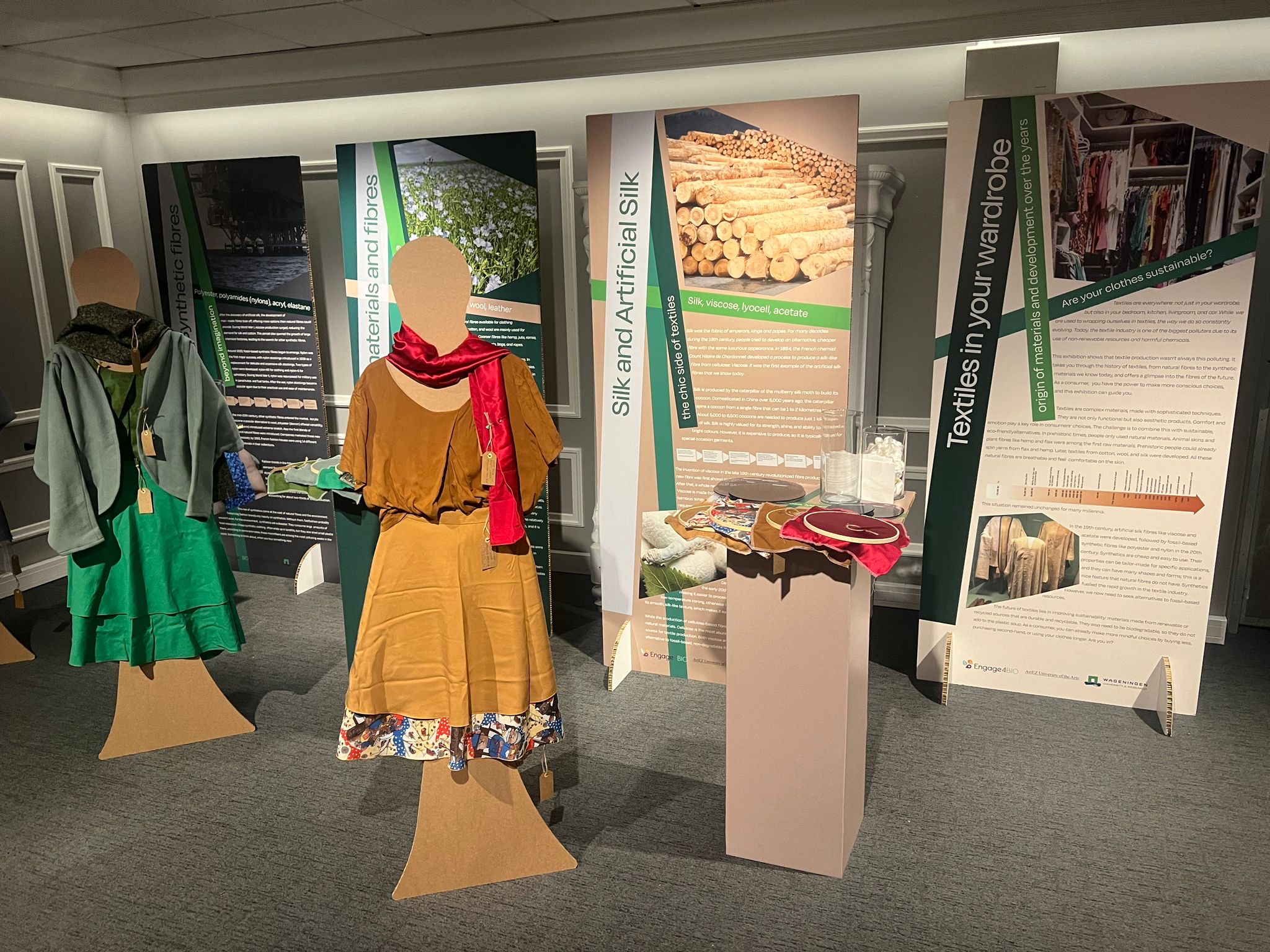Text René Didde
The construction industry can reduce its climate footprint substantially by switching to biobased materials made from fibrous crops such as elephant grass. WUR has developed several such materials. Now it is time to bring farmers and construction firms together.
‘Elephant grass is a terrific crop with lots of applications,’ says horticulturalist Joost Sterke from Haaren, Noord-Brabant. He has been growing this spectacular giant grass – which grows up to four metres in height – for seven years now. ‘Miscanthus is suitable as a substitute for peat in potting soil, and I sprinkle it in shredded form over my pots of seedlings. It stops weeds and moss from forming.’
Sterke notes a rising interest in this fast-growing crop among both horticulturalists and crop farmers on low-lying farms. ‘Elephant grass copes well with wet conditions.’ And there is interest in the construction industry because of the grass’s strong insulating qualities. WUR too sees elephant grass as a source of construction material. Richard Gosselink of Wageningen Food & Biobased Research (WFBR) has developed a rock-hard composite material for sheets shaped like the corrugated iron sheets that were used in the past for roofing barns. This ‘binderless board’ is formed by compression under high pressure and temperatures without the addition of synthetic glue, and provides a substitute for MDF board.
Farmers and builders
The government programme Building Balance, which WUR is involved in, aims at accelerating the use of biobased materials in construction. To that end, independent consultant Jan Willem van de Groep is trying to bring farmers and construction companies together. He’s convinced they have a lot to gain from each other.
The positive impact of biobased materials should be factored into the price
‘Arable and livestock farmers get a supplementary business model with new crops.’ Van de Groep has calculated that a miscanthus farmer can make up to 3000 euros or more per hectare. And the construction sector can reduce its negative impact on the climate. The manufacture of stone wool and glass wool, for example, currently consumes a lot of energy and emits a lot of CO2 and nitrogen. Growing elephant grass is easy and means CO2 is captured in the building material.
The Building Balance programme aims to expand to 13 regions, each with 1000 hectares of new fibre production, some from elephant grass and some from other crops such as hemp or flax. The idea is that there will be 50,000 hectares by 2030. If production reaches 180,000 hectares, the sector could replace mineral fibres with biofibres entirely. ‘That is about 10 per cent of Dutch farmland, so it would contribute to a 5.5 Mton reduction in CO2 emissions in building construction and agriculture,’ Van de Groep says.
Japanese knotweed
Gosselink’s colleague Arjen van Kampen displays other biobased building materials developed in Wageningen, such as insulation material made of hemp and 3D-printed material made of fibres from Japanese knotweed mixed with biobased plastic. Researchers in Wageningen – and there are now around 150 of them – have been working on biobased materials for 30 years.
The research group previously developed ‘bio-asphalt’, in which the petroleum product bitumen was replaced with lignin, the woody substance from which plants derive their strength. ‘In 30 pilot projects, half of the fossil bitumen has been replaced by lignin,’ says Gosselink. In the coming year, he expects to construct a trial section of road surface in which all the bitumen is replaced with biobased components.
Wageningen research is also edging closer to creating roofing material based on lignin. Lignin also has the potential to replace the adhesive material phenol formaldehyde in products like chipboard or cladding panels known by the brand name Trespa.
And those are not the only golden opportunities for a more sustainable construction sector. Take for example the invention in WFBR’s lab of a way of reactivating old cement. Cement is the main component of concrete, which accounts for seven per cent of global CO2 emissions. The addition of certain biopolymers made from waste from the food industry causes old cement to form new compounds. ‘And then the cement sticks again, having been reactivated, as it were,’ says Gosselink.
Farmers gain a supplementary business model with new crops
‘We hope to make a paving slab as a demonstration product in 2024.’ WFBR is collaborating on this with AMS Institute, TNO and the private sector.
Year-round supply
But application of the innovations is still relatively limited. Van de Groep feels the government should create more stimulating conditions through legislation and incentive programmes. And farmers need to be capable of supplying biobased building materials all year round, and guarantee certain technical specifications and a consistent quality.
Even more important are good business models for farmers. For instance, their biofibre yield might compensate for a reduction in the number of cows they keep, says Van Kampen. ‘The ecosystem services provided by these crops should be taken into account as well. Such as the positive impact on soil and water quality, increased biodiversity and CO2 sequestration in building materials.’
Edwin Hamoen, manager of the Nature Based Materials research programme on which Gosselink and Van Kampen are also working, adds: ‘As a society and therefore also as Wageningen researchers, we need to take a much more integral view of issues such as the energy transition, a more circular economy and the problems in agriculture. The positive impact of using biobased materials should be factored into the price for a fair comparison with conventional materials.’
One problem Hamoen sees is that, as in agriculture, it is not easy to get the construction sector to leave the beaten track and break new ground. ‘The construction world won’t change tack until all the materials have proven themselves twice over. And often rightly so, as quality and safety must come first. But this chicken-and-egg situation can be resolved faster if the government sets requirements for the use of biobased materials during the tendering process.’

 Illustration Rhonald Blommestijn
Illustration Rhonald Blommestijn 

